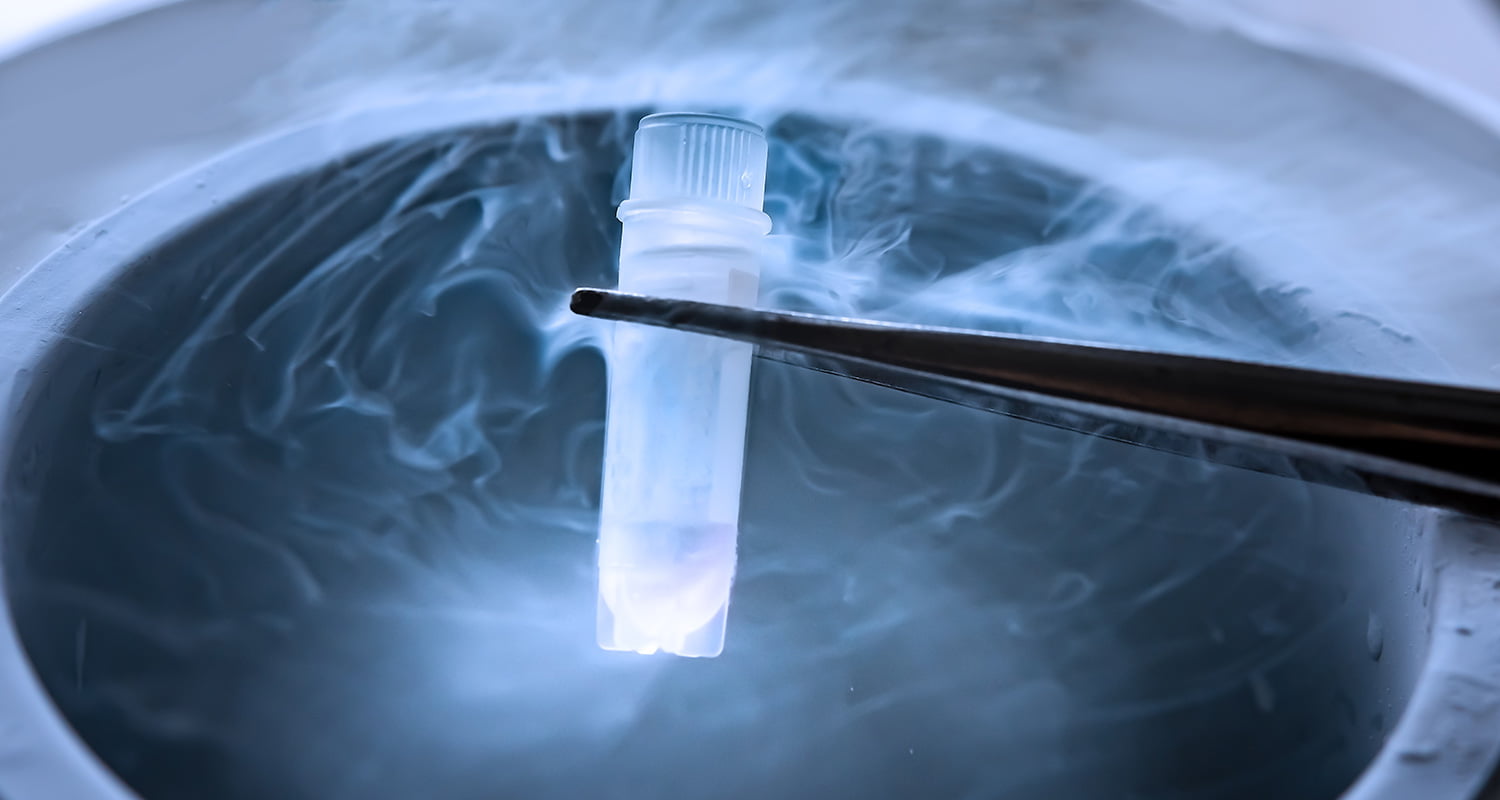
Fertility preservation – oocyte cryopreservation
Oocyte cryopreservation allows the preservation of female fertility through a rapid freezing technique – oocyte vitrification.
Oocyte cryopreservation is indicated in the following situations:
- women with oncological diseases or other diseases that require treatments that may affect their future fertility
- healthy women who, for personal and/or professional reasons, wish to postpone their plans for motherhood until later in life
The procedure for oocyte cryopreservation involves several steps:
- Medical consultation – it is essential to schedule an appointment with a specialist in Gynecology/Obstetrics and a subspecialty in Reproductive Medicine. Above all, before moving forward with the process, it is necessary to be sure that it is appropriate for your health condition and that it is the right path to follow.
During the consultation, the patient is assessed using tests and hormonal analyses and the ovarian stimulation protocol to be followed is defined. - Ovarian stimulation – on the 2nd or 3rd day of the menstrual cycle, daily hormonal medication is started, which will trigger the recruitment and growth of several follicles at the same time.
Regular ultrasound monitoring is performed and once the optimal follicular size is reached, medication is scheduled to trigger the final maturation of the oocytes contained in the follicles.
Follicular puncture is performed 36 hours after the administration of this medication.
This stage can take around 8 to 15 days, depending on the individual response to the medication. - Follicular puncture – a quick surgical procedure, performed under sedation and via the vagina, during which the fluid from each follicle is aspirated.
Hospitalization is not necessary, but rest and a light diet are recommended on the day of the procedure. - Oocyte selection – the follicular fluid obtained is observed in the laboratory and the oocytes are collected. These are assessed for their degree of maturity and only mature oocytes are selected for cryopreservation.
- Vitrification – the selected oocytes are cryopreserved in devices called straws, using the vitrification technique. The straws are stored in liquid nitrogen containers, where they remain until they are used.
The development of the vitrification technique has allowed for a great evolution in the cryopreservation of female gametes.
This technique uses media with cryoprotective solutions in their composition that replace the water present in large quantities in the oocytes , protecting the membranes and preventing the formation of ice crystals inside them. The oocyte is thus prepared to withstand the low temperatures to which it will be subjected.
The survival rate of oocytes after vitrification is above 90%. However, there are factors that will influence the use of these cryopreserved oocytes, namely oocyte quality.
Therefore, it is important to note that the success rate of oocyte cryopreservation is high but that the final objective – pregnancy – will depend on many other conditions.
Some considerations:
The quality of oocytes is affected by several factors, the most important being the patient’s age. We can say that the later the oocyte cryopreservation is performed, the lower the quantity and quality of the oocytes recovered.
Cryopreservation of oocytes is never a guarantee of future pregnancy. Therefore, postponing motherhood should be discussed with your doctor to understand the risks involved.
According to current Portuguese law, oocytes can remain cryopreserved for a period of 5 years, after which the patient will have to sign a new consent to maintain cryopreservation for a new period of 5 years.
After completing the laboratory procedure, you will be informed of how many oocytes were cryopreserved and a medical appointment will be scheduled to discuss the need to repeat the procedure to increase the reserve of cryopreserved oocytes.
